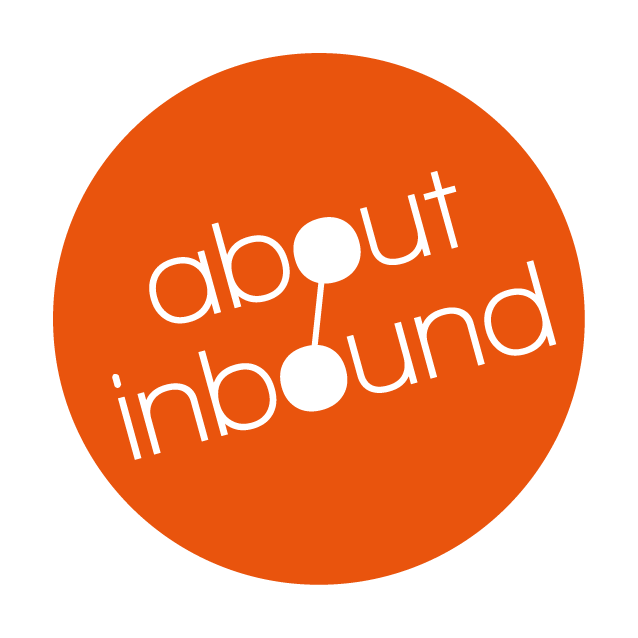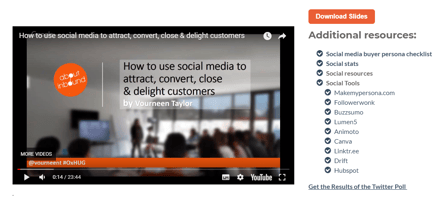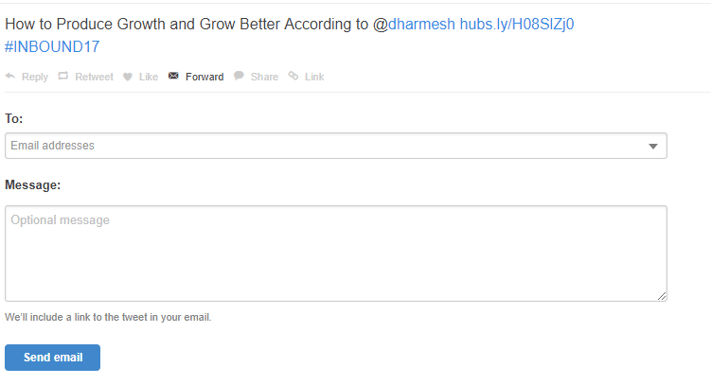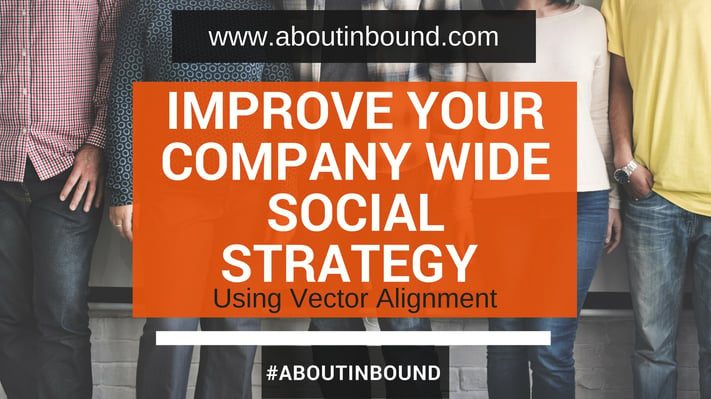
You are possibly wondering what linear algebra has to do with social media. Let me explain. I listened to Dharmesh Shah introduce the concept of what he called “vector alignment” while attending the Inbound17 event. He came up with this idea based on a conversation he had previously with Elon Musk. This concept is very simple yet most organisations find it difficult to implement or worse overlook it completely as a priority.
"Every person on the team is a vector. Your progress is determined by the sum of all vectors" - Elon Musk
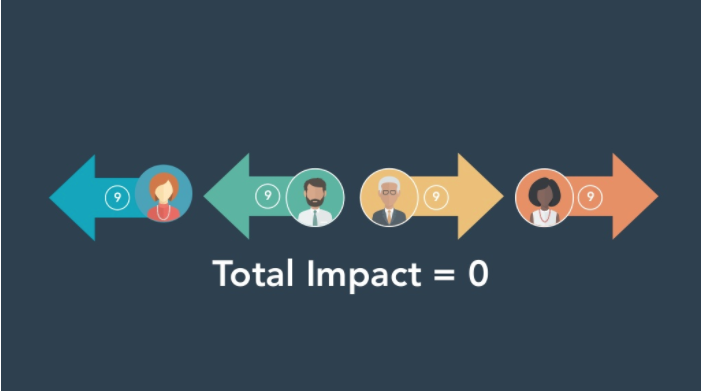
Improve your company wide social strategy using vector alignment:Links to sections on this post
|
Excellent team, yet we're having a negative impact?
Imagine you have outstanding customer support team members, your individual contributors on the marketing team are excellent, your sales reps are top notch and so are your recruiters as they are hiring all these great people.
Even though you have great individual teams or departments, if they are not pulling in the same direction you are not going to reach your desired results efficiently. If all vectors across an entire organisation are pulling in the same direction (alignment) you will get maximum impact.
Imagine the company has a goal to double their growth, but each department interprets this differently. They want credit for their own metrics. Thus each individual team member will have a different focus or direction.
Brian Halligan, Hubspot CEO also spoke about this concept at the same Inbound17 keynote. He noticed that as the company grew, managers "optimised for their department over the company". He found it was easier to keep the vectors aligned when the numbers of employees were smaller but at scale-up it became a problem.
To solve this problem, each employee was instructed to think about "Hubspot's hierarchy of needs". when making a decision e.g.Customer> Company> Department> Me
1) Does this solve for the customer?
2) Does this solve for the company?
3) Does this solve for the department?
4) Does this solve for me?
The problem with departmental focused goals
Often a department's goal metrics can be isolated and quite different for each department within a company. As per below. Even though the goals are similar and roughly in the same direction the specific focus is different and misaligned. e.g. Marketing are not focused on getting customers but just leads.
Marketing = Number of leads
Sales = Number of closed won deals
Support = Number of tickets closed
Recruitment = Number of new hires
Now imagine that each one of those departments uses a highly transparent and visible channel for external communications such as social media.
The departments don't talk to each other as much, as they are now based in remote locations or in offices around the world.There is no clear aligning of process, tools or strategy in place at a company level. Ultimately, what happens, your most precious asset, your customers loose out.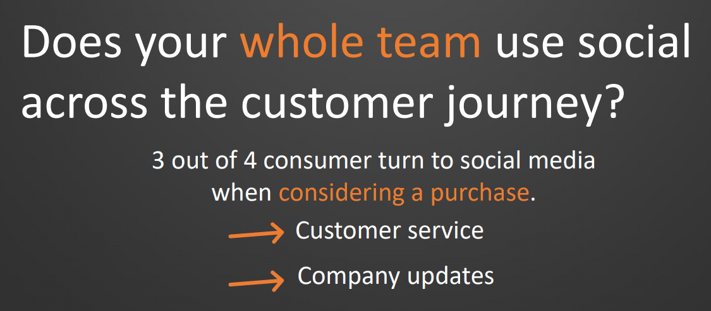
FREE SOCIAL STRATEGY RESOURCES:The above slide was taken from a presentation you can download below (no email required) |
VECTOR MISALIGNMENT- Customer journey map
| ACTION | QUESTIONS | PAIN POINTS | IMPACT | CHANNEL | |
| 1. CUSTOMER SUPPORT | Customer contacts support with issue while trialing product | I want it to do X. But I can't get it to work? | Support won't help as I am not a paying customer :( | Negative NPS | |
| 2. SALES | Sales rep connects to the lead on Linkedin | Why can't the sales rep help me with my issue? | The sales rep dosn't seem capable of helping me :( | Lost opportunity | |
| 3. MARKETING | Places banner ads & sends trigger emails to onboard during trial. | Why don't these emails help me solve my specific issue. I have no one to ask? | I am getting too many emails & they don't help solve my specific issue. I have no one to help me. | Negative sentiment & lack of ROI | Email & social ads |
| 4.RECRUITMENT | Contacts propsecitive new hire via Linkedin. | Why is this recruiter contacting me now? | I have had such a bad impression and there seems to be no internal communication why would I work for this company? | Lost opportunity for new hire, potential negative review on glassdoor will not recomend to peers. | Linkedin/ Glassdoor |
Example Customer Journey Scenario
A prospective lead signs up for a free trial of your product. He has a problem using the product and tweets @customersupport. But they can't help him as he is not a paying customer.
The sales rep connects to the lead on Linkedin at the same time. Lead is annoyed that he didn't get help and communicates to this to the rep. The rep is on the back foot and without technical experience or a clear process struggles to help the lead.
Marketing team sends trigger emails to help onboard the prospect through the trial. The lead see's this but is frustrated that he can't seem to achieve the same results as discribed.
The recruiters contact the lead via Linkedin to see if he would be interested in a position. The lead seems a good fit based on industry experience. The prospect is annoyed that the recruiters had no idea that he had this issue and he has communicated with others in the organisation. They are having a negative impression of the organisation
End result the lead doesn't convert, gives bad a NPS to support, he communicates to his peers with negative sentiment via Glassdoor, and in will turn down the opportunity to get a position with the organisation.
Imagine the difference in impact, if everyone was using the same tools, process and strategy and they worked together towards shared goals for the organisation. This is the concept of vector alignment in practice.
Using social in customer support as an example
One inbound principle is to be where your customers are. Many go to Twitter to ask questions or to get help. A great way customer support can have more impact is to invest in a social customer support/ service strategy. To start with, search for mentions of your brand and product. What are people asking? What are they frustrated about or happy with? Who can best help them?
Identify contacts in Twitter accross the customer lifecycle
In Hubspot, you can identify what stage of the lifecycle your contacts are at e.g. are they a lead or customer? So you can tailor your communications effectivelyto that specific stage.

Using the 'forward' function to email social messages to the right person internally.
If a team member spots a post in a social monitoring stream that they should inform others about, they can easily forward it on. (See below example from the Hubspot social tool)
Departmental alignment ideas
Customer support are the eyes and ears of your organisation. They are on the ground listening to customers problems, ideas and opportunities every day via social and other channels. The potential for them to help other departments internally is huge.
Try to identify opportunities for alignment accross other departments and to measure those against impact on the company wide goals.
SUPPORT -> SALES - Flag opportunities for upgrades, add-ons, interactions with prospects
SUPPORT -> SERVICES - Flag potential churn risks or opportunties for case studies
SUPPORT -> DEVELOPMENT - Feedback ideas for development and bug issues
SUPPORT -> RECRUITMENT - Identify enthusiastic clients who have potential as future candidates
SUPPORT -> MARKETING - Identify frequent questions that would make good content pieces
"While a marketing strategy focuses mainly in targeting customers and promoting brands, products or services, a social media strategy is framed in a holistic managerial perspective, revealing and boosting the organizational goals in a set of pre-identified business valuable areas. "1 - Sciencedirect.com
KEY TAKEAWAYS:
- Social media is not just for marketing
- Identify which departments are using social media
- Identify what tools are being used across the organisation
- Collaborate with other departments and identify opportunties for alignment that will have impact on company wide goals.
- Document a clear process and strategy and educate team members company wide.
Resources:
